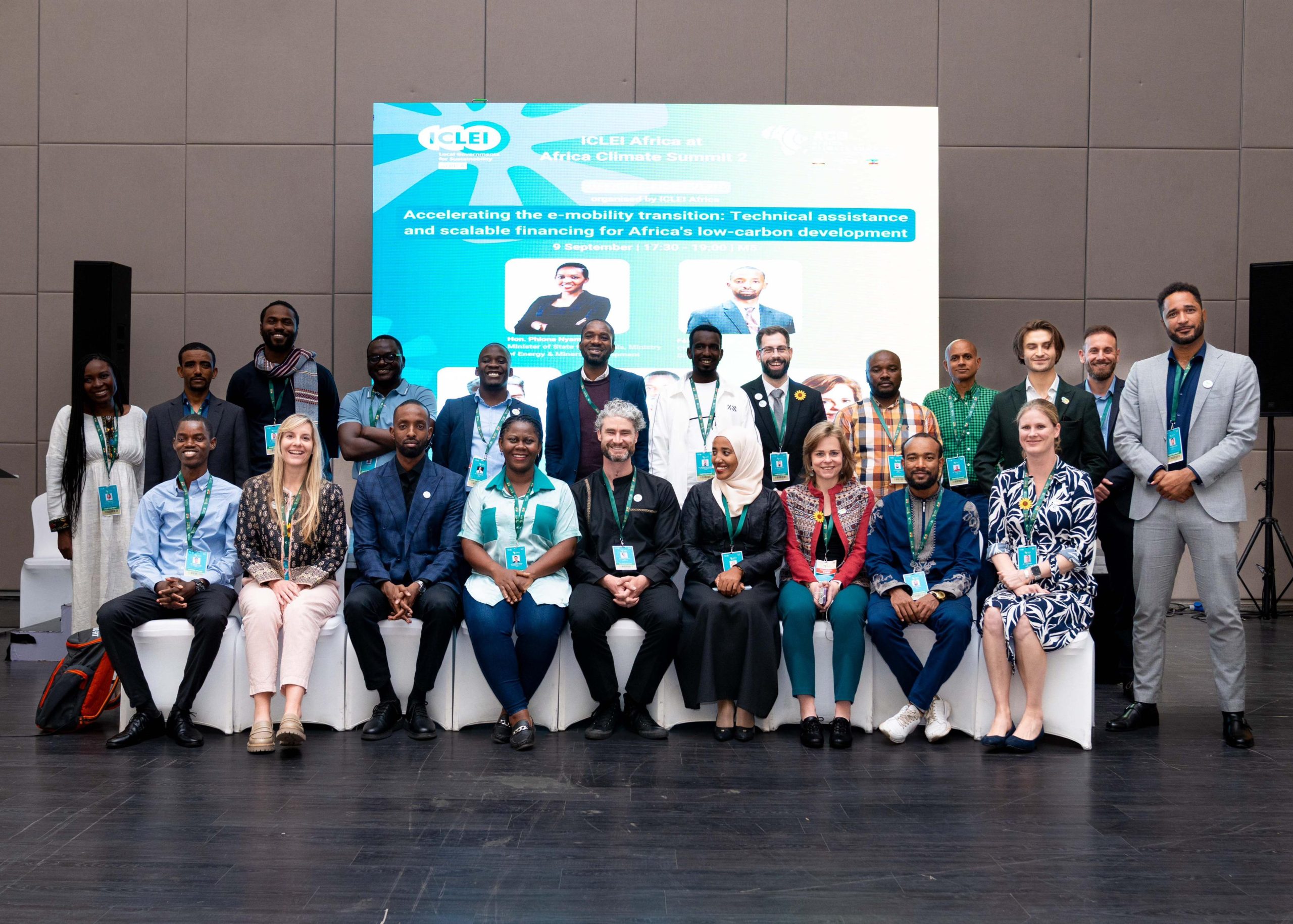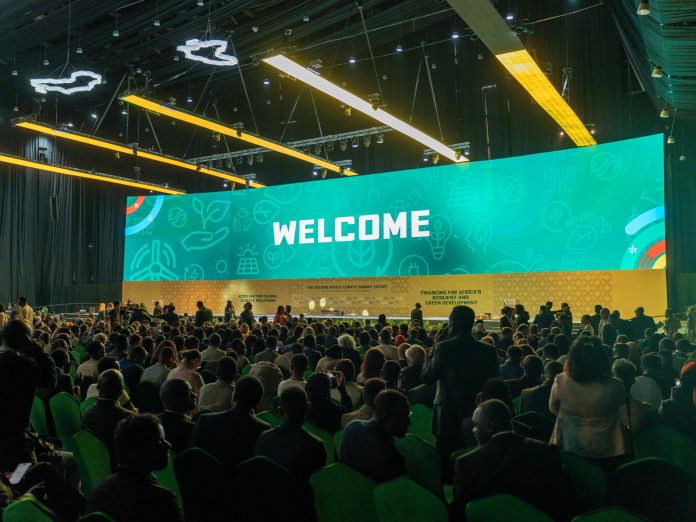The Second Africa Climate Summit (ACS2), hosted in Addis Ababa under the theme “Accelerating Global Climate Solutions: Financing for Africa’s Resilient and Green Development,” was framed by high-level plenaries and declarations. Yet, much of the summit’s vitality was found in its side events, where ministers, innovators, financiers, and civil society converged to debate practical pathways for implementation. In these sessions, the broad ambitions of leaders were translated into sectoral strategies, exposing both the promise and the constraints of Africa’s climate transition.
At a side event hosted by UNIDO Climate Tech Innovation with support from the Global Environment Facility, the urgent need to shift adaptation finance from donor dependency to private sector mobilization was emphasized, with initiatives such as Programme for Innovation in Climate Adaptation (PARS) and Climate Adaptation Innovation Learning (CAIL) highlighted as tools to achieve this. Kenya Climate Ventures CEO Victor Ndiege reinforced the call by stressing that MSMEs, if supported with patient capital and enabling policies, can be repositioned as key drivers of scalable, market-ready adaptation solutions that strengthen both communities and economies.
A parallel conversation unfolded during a breakfast hosted by the Global Wind Energy Council (GWEC), Enzi Ijayo Africa Initiative, and Africa Climate Insights, where the newly released report The Renewable Energy Investment Case for Africa was debated. The report, developed for ACS2, demonstrated that while Africa holds 60 percent of the world’s best solar resources, it accounted for less than one percent of global renewable capacity additions in 2024. Financing deficits were identified as the central constraint. Whereas globally clean energy investment outpaces fossil fuel spending, in Africa more financing still flows toward fossil projects. The report concluded that Africa’s energy crisis is not one of technology or ambition but of capital, as renewable solutions remain economically viable yet underfunded.
The case was made that Africa must triple its annual renewable growth rate, currently at 6.2 percent, to meet the Nairobi Declaration target of 300 GW by 2030. The discussions at the breakfast placed emphasis on innovative financing instruments, from green bonds to blended finance, as mechanisms that could shift risk perceptions and attract private investors. It was argued that without these mechanisms, Africa’s clean energy future risks being delayed, with consequences for both development and climate goals.
Read also: Kenya releases report on Africa’s climate progress since inaugural ACS in 2023
Another critical debate was staged around Africa’s positioning in the global carbon markets. A side event on unlocking demand and finance for scaling carbon markets warned that although Africa contributes significantly to global mitigation potential, it secures less than five percent of high-value credits. The dominance of low-cost reductions was said to have trapped the continent in marginal positions, even as compliance-driven markets under Article 6 of the Paris Agreement begin to consolidate. The urgency of diversifying Africa’s portfolio beyond forestry-based credits to include technologies such as biochar and direct air capture was emphasized. Without such diversification, Africa’s bargaining power in global markets will remain limited, and its communities will not reap the full dividends of carbon finance.

The urgency of adaptation was reinforced by a high-level dialogue hosted by the Global Center on Adaptation and the African Union. It was observed that while adaptation finance flows to Africa have increased, they still cover only a fraction of what is needed. Models such as the Africa Adaptation Acceleration Program (AAAP) were showcased as evidence that scalable frameworks already exist. By leveraging blended finance and aligning donor contributions with African priorities, AAAP has been positioned as the largest adaptation initiative of its kind, shaping more than $25 billion of investments across 40 countries. The Addis discussions revealed, however, that the gap between pledges and delivery continues to undermine trust, and that the burden of proof is unfairly placed on African states despite their limited responsibility for global emissions.
Attention was also drawn to the role of young people in driving Africa’s green industrialization. A side dialogue at the UNDP Pavilion explored how youth-led enterprises can anchor industrial transitions in local realities. With over sixty percent of the continent’s population under the age of 25, the demographic dividend was described as both a challenge and an opportunity. Speakers argued that innovation ecosystems must be intentionally structured to channel the creativity of Africa’s youth toward green manufacturing, renewable technologies, and digital solutions. The debate made it clear that Africa’s industrial future cannot be shaped without the voices and participation of its youngest citizens.
Equally striking was the session on institutional kitchens and clean cooking transitions. The scale of the challenge was revealed in stark numbers: schools across sub-Saharan Africa consume nearly eight million tonnes of firewood annually, leading to the felling of millions of trees and emissions exceeding 12 million tonnes of CO₂ each year. The hidden costs of this dependence, including health burdens and high operational expenses, were presented as both a climate and development liability. Yet, it was also suggested that institutional kitchens could serve as anchors for clean energy markets, creating demand that strengthens grids, reduces deforestation, and generates local jobs. The session proposed that pooled procurement and innovative carbon finance could unlock the $2.6 billion in annual societal benefits estimated from a full transition.
Debt and climate finance were also debated in a joint initiative of Colombia, Kenya, France, and Germany. The discussion revealed how Africa’s ability to invest in resilience is constrained by debt servicing obligations that exceed annual adaptation inflows. The call was made for a reform of multilateral development banks’ debt analysis frameworks, combined with restructuring tools and innovative swaps that could release fiscal space. By reframing debt as an obstacle to climate investment, the conversation challenged the orthodoxy that debt sustainability and climate ambition are separate domains.
A high-level dialogue convened by IGAD placed the Blue Economy at the heart of Africa’s climate resilience agenda, with a focus on the Horn of Africa. The session emphasized that sustainable use of marine and inland resources cannot be achieved without stronger governance frameworks, greater investment, and innovative partnerships. Experts from regional bodies and international agencies highlighted how fisheries management, maritime law, and ecological protection must converge to safeguard ecosystems while generating economic opportunities. It was concluded that advancing the Blue Economy is not only about environmental stewardship but also about anchoring regional stability and prosperity through climate-resilient growth.
Together, these side events at ACS2 demonstrated that the future of Africa’s climate action will not be decided solely in declarations or communiqués, but in the design of financial instruments, the mobilization of local innovators, and the restructuring of global markets. From renewable energy financing to carbon credit integrity, from youth-driven industrialization to institutional clean cooking, the Addis Ababa sessions revealed the breadth of Africa’s climate agenda.
It was evident that the continent’s transition will be built not only on commitments made at the summit’s plenary halls but also on the experiments, debates, and partnerships forged in its side rooms. By amplifying practical solutions and surfacing difficult trade-offs, these engagements gave substance to the larger vision of a resilient and green Africa.






